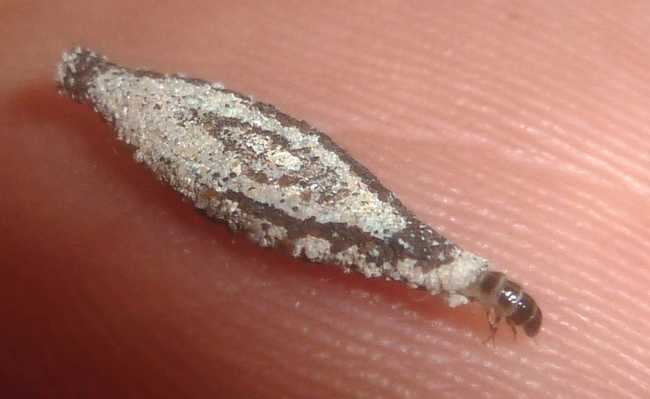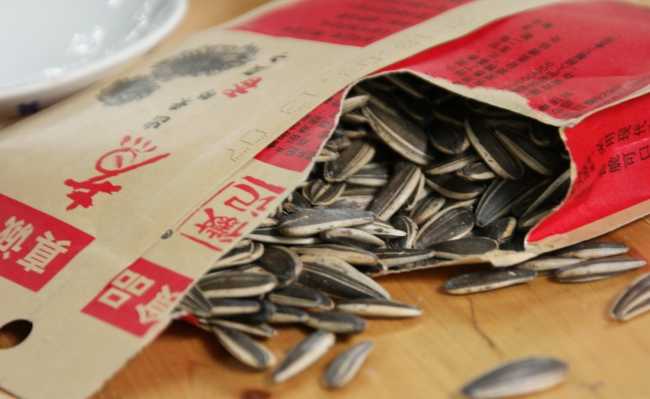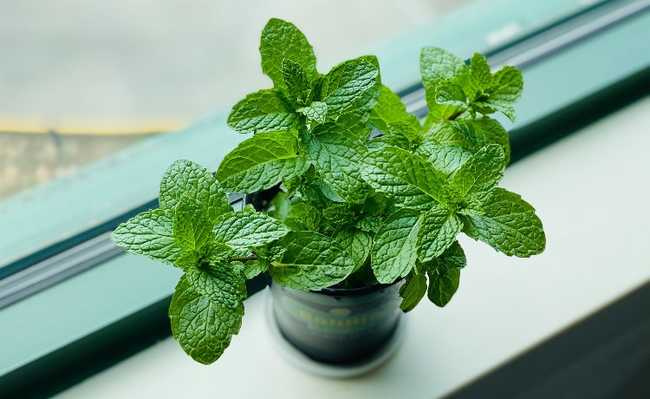What are carbon cycles?
Carbon cycles are the displacement movements of the element carbon in different environments

Edited and resized image by Mitchell Griest, is available on Unsplash
Carbon cycles are the displacement movements of the element carbon in different environments, including rocks, soils, oceans and plants. This prevents it from completely building up in the atmosphere and stabilizes the Earth's temperature. For geology, there are two types of carbon cycle: the slow, which takes hundreds of thousands of years, and the fast, which takes tens to 100,000 years.
the carbon
Carbon is a chemical element found in abundance in rocks and, to a lesser extent, in the soil, ocean, vegetables, atmosphere, the organism of living beings and objects. It is forged in the stars, being the fourth most abundant element in the universe and essential for the maintenance of life on Earth as we know it. However, he is also one of the causes of a significant problem: climate change.
Over very long time scales (millions to tens of millions of years), the movement of tectonic plates and changes in the rate at which carbon penetrates into the Earth's interior can alter global temperature. The Earth has undergone this change over the past 50 million years, from the extremely hot climates of the Cretaceous (about 145 to 65 million years ago) to the glacial climates of the Pleistocene (about 1.8 million to 11,500 years ago).
the slow cycle
Through a series of chemical reactions and tectonic activity, carbon takes between 100 and 200 million years to move between rocks, soil, ocean and atmosphere in the slowly occurring carbon cycle. On average, between ten and 100 million tons of carbon go through the slow cycle in one year. For comparison, human carbon emissions to the atmosphere are on the order of 10 billion tons, while the rapid carbon cycle moves from ten to 100 billion carbon per year.
The movement of carbon from the atmosphere to the lithosphere (rocks) starts with rain. Atmospheric carbon, combined with water, forms carbonic acid, which is deposited on the surface through rain. This acid dissolves rocks in a process called chemical weathering, releasing calcium, magnesium, potassium or sodium ions. These ions are transported to rivers and from rivers to the ocean.
- What is the origin of the plastic that pollutes the oceans?
- Ocean acidification: a serious problem for the planet
In the ocean, calcium ions combine with bicarbonate ions to form calcium carbonate, the active ingredient in antacids. In the ocean, most calcium carbonate is produced by shell-building (calcifying) organisms (such as corals) and plankton (such as coccolithophores and foraminifera). After these organisms die, they sink to the sea floor. Over time, layers of shells and sediments are compacted and turned into rocks, storing carbon, giving rise to sedimentary rocks such as limestone.
About 80% of carbonate rocks are generated this way. The remaining 20% contain carbon originating from living beings (organic carbon) decomposed. Heat and pressure compress carbon-rich organic material over millions of years, forming sedimentary rocks such as shale. In special cases, when organic matter from dead plants accumulates quickly, with no time for decomposition, the layers of organic carbon become oil, coal or natural gas rather than sedimentary rocks such as shale.
In the slow cycle, carbon is returned to the atmosphere through volcanic activity. That's because when the surfaces of Earth's land and oceanic crust collide, one sinks under the other and the rock it carries melts under extreme heat and pressure. The heated rock recombines into silicate minerals, releasing carbon dioxide.
- Carbon Dioxide: What is CO2?
When volcanoes erupt, they expel the gas into the atmosphere and cover the earth with siliceous rock, starting the cycle all over again. Volcanoes emit between 130 and 380 million metric tons of carbon dioxide per year. For comparison, humans emit about 30 billion tons of carbon dioxide a year - 100 to 300 times more than volcanoes - burning fossil fuels.
- Alcohol or gasoline?
If carbon dioxide rises in the atmosphere because of increased volcanic activity, for example, temperatures rise, leading to more rain, which dissolves more rock, creating more ions that eventually deposit more carbon on the ocean floor. It takes a few hundred thousand years to rebalance the slow carbon cycle.
However, the slow cycle also contains a slightly faster component: the ocean. At the surface, where air meets water, carbon dioxide gas dissolves and vents out of the ocean in constant exchange with the atmosphere. Once in the ocean, carbon dioxide gas reacts with water molecules to release hydrogen, making the ocean more acidic. Hydrogen reacts with carbonate from the weathering of rocks to produce bicarbonate ions.
Before the industrial age, the ocean spewed carbon dioxide into the atmosphere in balance with the carbon the ocean received during rock wear. However, as atmospheric carbon concentrations have increased, the ocean now removes more carbon from the atmosphere than it releases. Over millennia, the ocean will absorb up to 85% of the extra carbon that people put into the atmosphere by burning fossil fuels, but the process is slow because it's linked to the movement of water from the ocean's surface to its depths.
Meanwhile, winds, currents and temperature control the rate at which the ocean removes carbon dioxide from the atmosphere. (See The Ocean Carbon Balance at Earth Observatory.) It is likely that changes in ocean temperatures and currents have helped to remove carbon and restore carbon to the atmosphere in the few thousand years that ice ages began and ended .
The fast carbon cycle
The time it takes for carbon to go through the rapid carbon cycle is measured in a lifetime. The rapid carbon cycle is basically the movement of carbon through life forms on Earth or in the biosphere. About 1,000 to 100,000 million metric tons of carbon go through the rapid carbon cycle each year.
Carbon plays an essential role in biology because of its ability to form many bonds - up to four per atom - in a seemingly endless array of complex organic molecules. Many organic molecules contain carbon atoms that have formed strong bonds with other carbon atoms, combining into long chains and rings. Such carbon chains and rings are the foundation of living cells. For example, DNA is made up of two intertwined molecules built around a carbon chain.
Bonds in long carbon chains contain a lot of energy. When the currents separate, the stored energy is released. This energy makes carbon molecules an excellent source of fuel for all living things.
Plants and phytoplankton are major components of the rapid carbon cycle. Phytoplankton (microscopic organisms in the ocean) and plants take carbon dioxide out of the atmosphere by absorbing it into their cells. Using energy from the sun, plants and plankton combine carbon dioxide (CO2) and water to form sugar (CH2O) and oxygen. The chemical reaction is like this:
CO2 + H2O + energy = CH2O + O2
It can happen that carbon moves from a plant and returns to the atmosphere, but they all involve the same chemical reaction. Plants break down sugar to get the energy needed to grow. Animals (including people) eat plants or plankton and break down the plant's sugar for energy. Plants and plankton die and rot (are eaten by bacteria) or are consumed by fire. In all cases, oxygen combines with sugar to release water, carbon dioxide and energy. The basic chemical reaction goes like this:
CH2O + O2 = CO2 + H2O + energy
In all four processes, the carbon dioxide released in the reaction usually ends up in the atmosphere. The rapid carbon cycle is so closely linked to plant life that the growing season can be seen by how carbon dioxide floats in the atmosphere. In the Northern Hemisphere winter, when few land plants are growing and many are decaying, atmospheric concentrations of carbon dioxide increase. During spring, when plants start to grow again, concentrations drop. It's like the Earth is breathing.
Changes in the carbon cycle
Left undisturbed, the fast and slow carbon cycles maintain a relatively constant concentration of carbon in the atmosphere, land, plants and ocean. But when anything changes the amount of carbon in one reservoir, the effect ripples through the others.
In Earth's past, the carbon cycle has changed in response to climate change. Variations in Earth's orbit alter the amount of energy the Earth receives from the Sun and lead to a cycle of ice ages and warm periods like the Earth's current climate. (See Milutin Milankovitch) The ice ages developed when the Northern Hemisphere summers cooled and ice accumulated on the earth, which in turn slowed the carbon cycle. Meanwhile, several factors, including cooler temperatures and increased phytoplankton growth, may have increased the amount of carbon the ocean has removed from the atmosphere. The drop in atmospheric carbon caused further cooling. Likewise, at the end of the last Ice Age, 10,000 years ago, carbon dioxide in the atmosphere dramatically increased as temperatures warmed.
Changes in Earth's orbit are happening constantly, in predictable cycles. In about 30,000 years, Earth's orbit will have shifted enough to reduce sunlight in the Northern Hemisphere to the levels that led to the last ice age.
Today, changes in the carbon cycle are happening because of people. We disrupt the carbon cycle by burning fossil fuels and deforesting.
Deforestation releases carbon stored in trunks, stems and leaves - biomass. By clearing a forest, plants that would otherwise take carbon from the atmosphere as they grow are eliminated. There is a worldwide trend to replace forests with monoculture and pastures, which store less carbon. We also expose soil that expels carbon from decaying plant matter into the atmosphere. Currently, humans are emitting just under a billion tons of carbon into the atmosphere each year through land-use changes.
Without human interference, carbon from fossil fuels would slowly leak into the atmosphere through volcanic activity over millions of years in the slow carbon cycle. By burning coal, oil and natural gas, we accelerate the process, releasing vast amounts of carbon (carbon that took millions of years to accumulate) into the atmosphere every year. By doing this, we move carbon from the slow cycle to the fast cycle. In 2009, humans released about 8.4 billion tons of carbon into the atmosphere by burning fossil fuels.
Since the beginning of the Industrial Revolution, when people started burning fossil fuels, concentrations of carbon dioxide in the atmosphere have increased from about 280 parts per million to 387 parts per million, an increase of 39%. This means that for every million molecules in the atmosphere, 387 of them are now carbon dioxide - the highest concentration in two million years. Methane concentrations increased from 715 parts per billion in 1750 to 1,774 parts per billion in 2005, the highest concentration in at least 650,000 years.
Effects of changing the carbon cycle

Image: Carbon Cycles - NASA
All that extra carbon needs to go somewhere. So far, terrestrial and ocean plants have absorbed 55% of the extra carbon in the atmosphere, while about 45% remains in the atmosphere. Eventually, the land and oceans absorb most of the extra carbon dioxide, but up to 20% can remain in the atmosphere for many thousands of years.
Excess carbon in the atmosphere warms the planet and helps land plants grow bigger. Excess carbon in the ocean makes the water more acidic, putting marine life at risk. Learn more about this topic in the article: "Acidification of the oceans: a serious problem for the planet".
Atmosphere
It is significant that so much carbon dioxide remains in the atmosphere because CO2 is the most important gas for controlling the Earth's temperature. Carbon dioxide, methane and halocarbons are greenhouse gases that absorb a wide range of energy - including infrared energy (heat) emitted by the Earth - and then re-emit it. The re-emitted energy travels in all directions, but some returns to Earth, heating the surface. Without greenhouse gases, the Earth would be frozen at -18°C. With lots of greenhouse gases, Earth would be like Venus, where the atmosphere maintains temperatures around 400°C.
Because scientists know what wavelengths of energy each greenhouse gas absorbs and the concentration of gases in the atmosphere, they can calculate how much each gas contributes to global warming. Carbon dioxide causes about 20% of the Earth's greenhouse effect; water vapor accounts for about 50%; and clouds represent 25%. The rest is caused by small particles (aerosols) and smaller greenhouse gases such as methane.
- Are aerosol cans recyclable?
Concentrations of water vapor in the air are controlled by the Earth's temperature. Warmer temperatures evaporate more water from the oceans, expand air masses and lead to greater humidity. Cooling causes water vapor to condense and fall as rain, sleet or snow.
Carbon dioxide, on the other hand, remains a gas over a wider range of atmospheric temperatures than water. Carbon dioxide molecules provide the initial heating needed to maintain water vapor concentrations. When carbon dioxide concentrations drop, the Earth cools, some water vapor drops from the atmosphere, and the greenhouse heating caused by water vapor drops. Likewise, when carbon dioxide concentrations rise, the air temperature rises and more water vapor evaporates into the atmosphere - which amplifies the heating of the greenhouse.
So while carbon dioxide contributes less to the greenhouse effect than water vapor, scientists have found that carbon dioxide is the gas that determines temperature. Carbon dioxide controls the amount of water vapor in the atmosphere and therefore the size of the greenhouse effect.
Increasing concentrations of carbon dioxide are already causing the planet to warm up. While greenhouse gases are on the rise, average global temperatures have risen by 0.8 degrees Celsius (1.4 degrees Fahrenheit) since 1880.
This increase in temperature is not all the warming we will see based on current concentrations of carbon dioxide. Greenhouse heating does not happen immediately because the ocean absorbs heat. This means that the Earth's temperature will increase by at least another 0.6 degrees Celsius (1 degree Fahrenheit) because of carbon dioxide already in the atmosphere. The degree to which temperatures rise beyond that depends in part on how much more carbon humans release into the atmosphere in the future.
Ocean
About 30% of the carbon dioxide that people put into the atmosphere diffused into the ocean through direct chemical exchange. Dissolving carbon dioxide in the ocean creates carbonic acid, which increases the acidity of the water. Or rather, a slightly alkaline ocean becomes a little less alkaline. Since 1750, the pH of the ocean's surface has dropped 0.1, a 30% change in acidity.
Ocean acidification affects marine organisms in two ways. First, carbonic acid reacts with carbonate ions in water to form bicarbonate. However, these same carbonate ions are what shell-building animals like coral need to create calcium carbonate shells. With less carbonate available, animals need to expend more energy to build their shells. As a result, the shells end up getting thinner and more fragile.
Second, the more water that is acidic, the better it dissolves calcium carbonate.In the long term, this reaction will allow the ocean to absorb excess carbon dioxide because more acidic water will dissolve more rock, release more carbonate ions, and increase the ocean's ability to absorb carbon dioxide. In the meantime, however, more acidic water will dissolve the carbonate shells of marine organisms, making them pitted and weak.
Warmer oceans - a product of the greenhouse effect - can also diminish the abundance of phytoplankton, which grow best in cold, nutrient-rich waters. This could limit the ocean's ability to extract carbon from the atmosphere through the rapid carbon cycle.
On the other hand, carbon dioxide is essential for plant and phytoplankton growth. An increase in carbon dioxide can increase growth by fertilizing those few species of phytoplankton and oceanic plants (such as seagrasses) that take carbon dioxide directly from the water. However, most species are not helped by the increased availability of carbon dioxide.
Earth
Plants on land have absorbed approximately 25% of the carbon dioxide that humans put into the atmosphere. The amount of carbon that plants absorb varies greatly from year to year, but in general, the world's plants have increased the amount of carbon dioxide they absorb since the 1960s. Only part of this increase has occurred as a direct result of fossil fuel emissions.
With more atmospheric carbon dioxide available to convert to plant matter in photosynthesis, plants were able to grow larger. This increase in growth is known as carbon fertilization. Models predict that plants could grow 12 to 76 percent more if atmospheric carbon dioxide doubles, as long as nothing else, like water scarcity, limits their growth. However, scientists don't know how much carbon dioxide is increasing plant growth in the real world, because plants need more than carbon dioxide to grow.
Plants also need water, sunlight and nutrients, especially nitrogen. If a plant doesn't have one of these things, it doesn't grow, no matter how abundant the other needs. There is a limit to how much carbon plants can take from the atmosphere, and this limit varies from region to region. So far, it appears that carbon dioxide fertilization increases plant growth until the plant reaches a limit on the amount of water or nitrogen available.
Some of the changes in carbon absorption are a result of land use decisions. Agriculture has become much more intensive, so we can grow more food on less land. In high and mid latitudes, abandoned lands are reverting to forest, and these forests store much more carbon, in both wood and soil, than crops. In many places, we prevent plant carbon from entering the atmosphere by extinguishing fires. This allows the woody material (which stores carbon) to build up. All of these land use decisions are helping plants to absorb carbon released by humans in the Northern Hemisphere.
In the tropics, however, forests are being cleared, often through fire, and this releases carbon dioxide. In 2008, deforestation accounted for about 12% of all human carbon dioxide emissions.
The biggest changes in the terrestrial carbon cycle are likely to occur because of climate change. Carbon dioxide increases temperatures, prolonging the growing season and increasing humidity. Both factors led to some additional plant growth. However, warmer temperatures also stress plants. With a longer and warmer growing season, plants need more water to survive. Scientists are already seeing evidence that plants in the Northern Hemisphere slow growth in summer because of hot temperatures and water scarcity.
Drought and water-stressed plants are also more susceptible to fire and insects when growing seasons get longer. In the far north, where rising temperatures have the greatest impact, forests have already started to burn more, releasing carbon from plants and soil into the atmosphere. Tropical forests can also be extremely susceptible to drying out. With less water, tropical trees slow growth and absorb less carbon, or die and release stored carbon into the atmosphere.
Warming caused by rising greenhouse gases can also "roast" the soil, accelerating the rate at which carbon seeps out in some places. This is particularly worrisome in the far north, where the frozen ground - permafrost - is thawing. Permafrost contains rich deposits of carbon from plant matter that have built up for thousands of years as the cold slows down decay. When the soil warms, organic matter decays and carbon - in the form of methane and carbon dioxide - enters the atmosphere.
Current research estimates that permafrost in the Northern Hemisphere holds 1,672 billion tons (Petagrams) of organic carbon. If just 10% of that permafrost thaws, it could release enough extra carbon dioxide into the atmosphere to raise temperatures by 0.7 degrees Celsius (1.3 degrees Fahrenheit) in 2100.
Study of the carbon cycle
Many of the questions scientists have yet to answer about the carbon cycle revolve around how it is changing. The atmosphere now contains more carbon than at any time in at least two million years. Each reservoir in the cycle will change as that carbon goes through the cycle.
How will these changes be? What will happen to plants as temperatures rise and climate changes? Will they remove more carbon from the atmosphere than they return? Will they become less productive? How much extra carbon will the permafrost melt in the atmosphere and how much will this amplify warming? Does ocean circulation or warming change the rate at which the ocean absorbs carbon? Will ocean life become less productive? How much will the ocean acidify and what effects will it have?
NASA's role in answering these questions is to provide global satellite observations and related field observations. By early 2011, two types of satellite instruments were collecting information relevant to the carbon cycle.
Moderate Resolution Imaging Spectroradiometer (MODIS) instruments, flying on NASA's Terra and Aqua satellites, measure the amount of carbon plants and phytoplankton turn into matter as they grow, a measure called net primary productivity. MODIS sensors also measure how many fires occur and where they burn.
Two Landsat satellites provide a detailed view of ocean reefs, what is growing on land and how land cover is changing. It is possible to see the growth of a city or a transformation from forest to farm. This information is crucial because land use is responsible for one third of all human carbon emissions.
Future NASA satellites will continue these observations and will also measure carbon dioxide and methane in the atmosphere, height and vegetation structure.
All of these measures will help us see how the global carbon cycle is changing over time. They will help us assess what impact we are having on the carbon cycle, releasing carbon into the atmosphere or finding ways to store it elsewhere. They will show us how climate change is altering the carbon cycle and how the changing cycle is altering the climate.
Most of us, however, will observe changes in the carbon cycle in a more personal way. For us, the carbon cycle is the food we eat, the electricity in our homes, the gas in our cars, and the weather over our heads. As we are part of the carbon cycle, our decisions about how we live ripple through the cycle. Likewise, changes in the carbon cycle will affect the way we live. As each of us comes to understand our role in the carbon cycle, knowledge enables us to control our personal impact and understand the changes we are seeing in the world around us.








